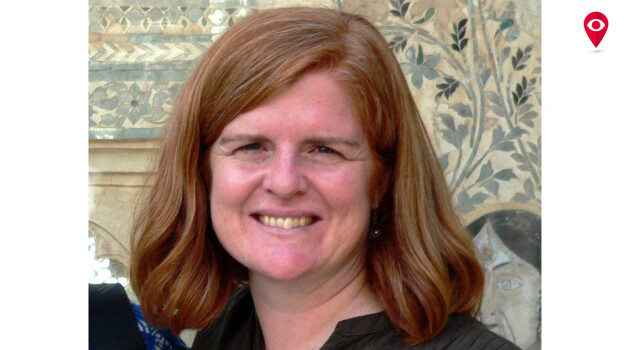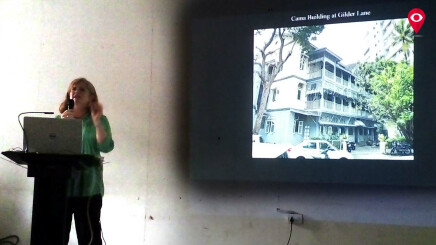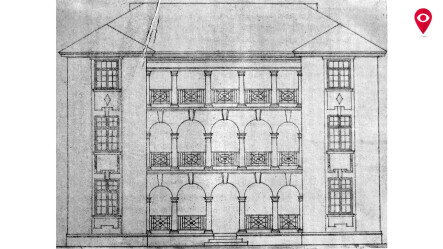
“I am fascinated by not how the house is built but how space is used,” says Abigail McGowan, professor of South Asian history at the University of Vermont. Believe it or not, but McGowan is fascinated by community housing in Mumbai and has been visiting the city for the last few years to carry out research on the subject!
Currently, she is studying two communities - Parsis and Chitrapur Saraswat Brahmins, exploring their role in developing new forms of community housing in the early 20th century. She intends to write a book based on the history of housing in Bombay from 1900-1960. Abigail gave a lecture on the subject at the School of Environment and Architecture, Borivali where we got a chance to interact with her and to know more about her research.

Q. Why did you pick the Parsis and Saraswat Brahmins as two communities who have built housing in Mumbai?
A. I focus on these two communities because they were really the pioneers of the idea of community housing, launching the earliest formally organized, publicly recognized efforts in the field. As the pioneers, both examples were used by others to think about how to advance housing needs through community institutions. But I also focus on Parsi and Kanara Saraswat efforts because community housing played such an important role over the 20th century for each community, with a large proportion of each group living in community housing projects.
Q. What makes these two communities stand apart - money power? business sense? Shrewdness?
A. On the Parsi side, it was money to be sure: to build the 5 N.N. and R.N. Wadia Baugs, the family trusts spent over Rs 1.25 crore, which was money simply unavailable to many others at the time. On the Saraswat side, the first cooperative housing society was very inexpensive, so the innovation was due less to the total amount of capital than to the organizational abilities of SS Talmaki, and his ability to reach out to key officials in the city to get things done.
Q. Why did you make this part of your research?
A. As a historian of South Asian visual and material culture, I’ve long been interested in tracing changes in home furnishings and what people choose to have in their homes. But increasingly that interest led me to a wider question: how did new housing constraints and opportunities in Mumbai help to shape consumption choices? In the early 20th century we are used to thinking about the Bombay Improvement Trust (BIT) and then the Bombay Development Directorate as shaping the development of housing, both through chawl construction and then through suburban development. But I wanted to explore how individual communities took on the problem of housing, both to see the different strategies groups used to pay for construction, but also how housing then helped shape community identities.

Q. Who did you interact with for your research - how challenging was it to get information that is a century old?
A. One of the things that made the project possible was that each community in question has a keen sense of and interest in their own community. So there are community specific materials held in private libraries; those were generously shared by community leaders who are enthusiastic about having their story told. In addition, there is a decent amount of information one can glean from The Times of India; my library in the US has online access to the old issues of the TOI, so that was relatively easy. I would love to expand my research beyond these two main communities, but it is somewhat harder to find material.
Q. Can you list out the housing schemes the Parsis and Saraswats built in Mumbai?
A. The Parsis' housing schemes include late 19th century buildings which were put up at Gilder’s Lane in Tardeo, as well as Dadar Parsi Colony (started 1920), and the later baug projects: Navroz Baug (started in 1908) in Parel, Rustom Baug in Byculla (est. 1924), Jer Baug (Byculla, completed in 1936), Malcolm Baug (Jogeshwari, started in 1927), Cusrow Baug (Colaba, started 1932), and Ness Baug (started 1950s).

The Saraswat Cooperative housing societies (CHS) include the one at Gamdevi, but also the Saraswat Suburban CHS (est. 1919 at Santa Cruz), the Anandashram CHS (opened in 1937 at Proctor Road), Talmakiwadi CHS (opened 1940 at Tardeo), and then others which came after independence in the suburbs.
Q. What do you intend to do with the results of your research?
A. This research is part of a book I am writing on the history of housing in Bombay from 1900-1960. This is a history that I approach by exploring a wide variety of attempts to reshape what was built in the city but also how domestic spaces were used, filled, and understood. That includes everything from slum clearance and town planning by the Bombay Improvement Trust to attempts to revise building bye-law, reform sanitary practices, teach girls new home management skills through domestic science, advertise new household goods, start new stores to sell modern furniture in the city, and design new buildings. My argument is that home reforms become particularly interesting in this period and start to reshape the city in diverse ways.
Q. How often do you come to Mumbai or you have been staying here?
A. For the past few years, I have been coming to Mumbai once or twice a year usually for 1-3 weeks, i.e. short research trips. I’ve had longer research trips to India in the past; most recently in 2010-2011 I was based at CEPT University in Ahmedabad for research, and in 1999-2000, I split about 18 months between Ahmedabad and Mumbai.
Q. Why do you think the younger generation is opting out of the houses?
A. The flats in some of the buildings built over 100 years ago now feel really small to modern lifestyles, so while wealthy members of the younger generation love the location these colonies/societies have in the city, the flats feel cramped. So in some cases, the populations of the colonies/societies are getting very old.





